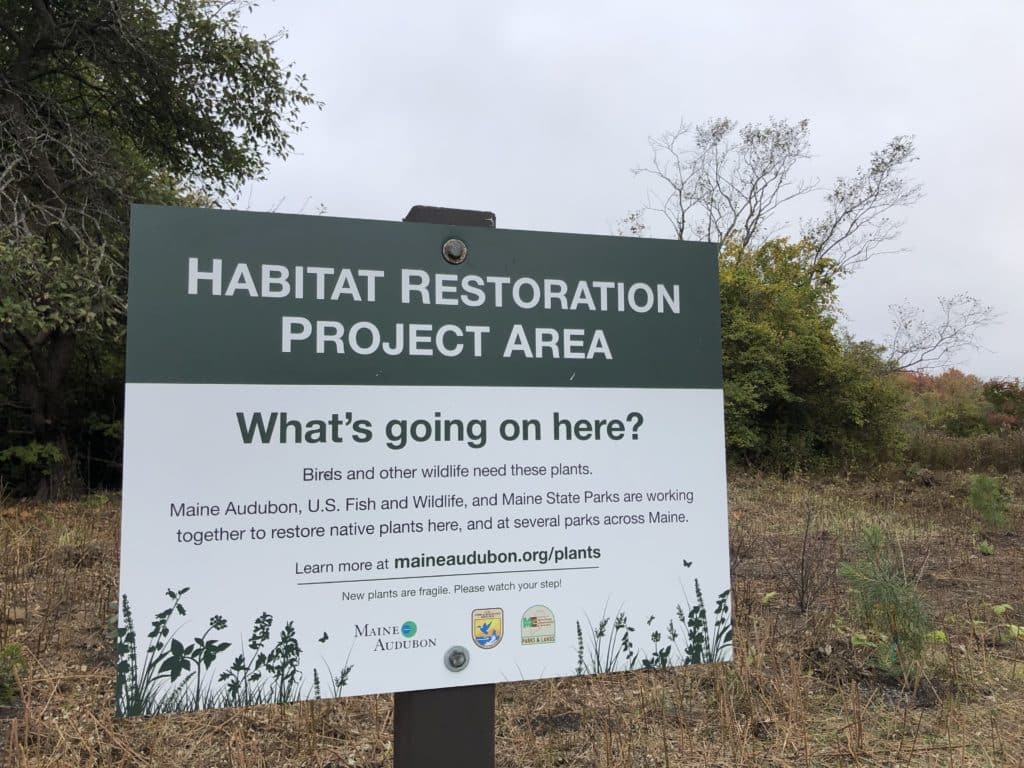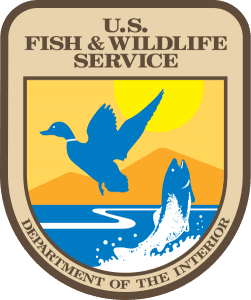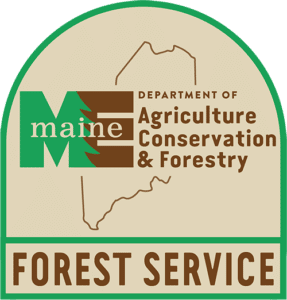


“Bringing Nature Home” in Maine State Parks
This is a collaborative project between Maine Audubon, U.S. Fish & Wildlife Gulf of Maine Coastal Program, and Maine State Parks to engage communities in restoring native plants and habitat for pollinators and other wildlife.
Look for demonstration gardens and habitat restoration areas throughout Maine State Parks during your visit. Scan the QR codes you see or visit our “Bringing Nature Home” web page to learn more about this project and find out what you can do to restore habitat for pollinators and other wildlife.
What’s so special about native plants?
Plants serve as the foundation for most ecosystems, natural communities, and habitats. Insects, birds, and other animals depend on plants for food and shelter. Every species of Maine wildlife has particular plants they have spent thousands of years co-adapting with over many generations. Herbivores like moose know which leaves to eat each season. Granivores like sparrows know where to look for particular seeds. Even carnivores like foxes and birds of prey know which plants are best for nesting material or to settle an upset stomach. People—including the Wabanaki, European naturalists, and modern ecologists—have documented these specific relationships, and these vast historic records of plant:animal interactions help guide how we can restore those connections in our parks, neighborhoods, and gardens today.
We have chosen species of native plants to grow in Maine State Parks based on documented benefits to wildlife and habitat, but also for their beauty, adaptability, and commercial availability. We have also prioritized species of plants that are rare, threatened, endangered, or even locally extinct.
Learn more about the individual species we’re restoring; look for labels near where they are growing in the park or read about them in our special booklet below (or view it here).
Resources
Maine Native Plant Finder: To find out more about other species Maine Audubon grows, promotes, and sells for Maine gardeners and property managers, and what Maine native plants might be right for your garden or community, visit www.mainenativeplants.org
To learn more about why native plants are important for wildlife and ecosystems, especially in developed landscapes, visit maineaudubon.org/plants
If you are interested in volunteering or participating in this project, please email plants@maineaudubon.org
To learn more about U.S. Fish & Wildlife Service’s Gulf of Maine Coastal Program, visit fws.gov/gomcp
Plants
Northern Bayberry, Myrica pensylvanica
Butterflyweed, Asclepias tuberosa
Northern Spicebush, Lindera benzoin
Seaside Goldenrod, Solidago sempervirens
New Jersey Tea, Ceanothus americanus
Blue-stemmed Goldenrod, Solidago caesia
Swamp Milkweed, Asclepias incarnata
